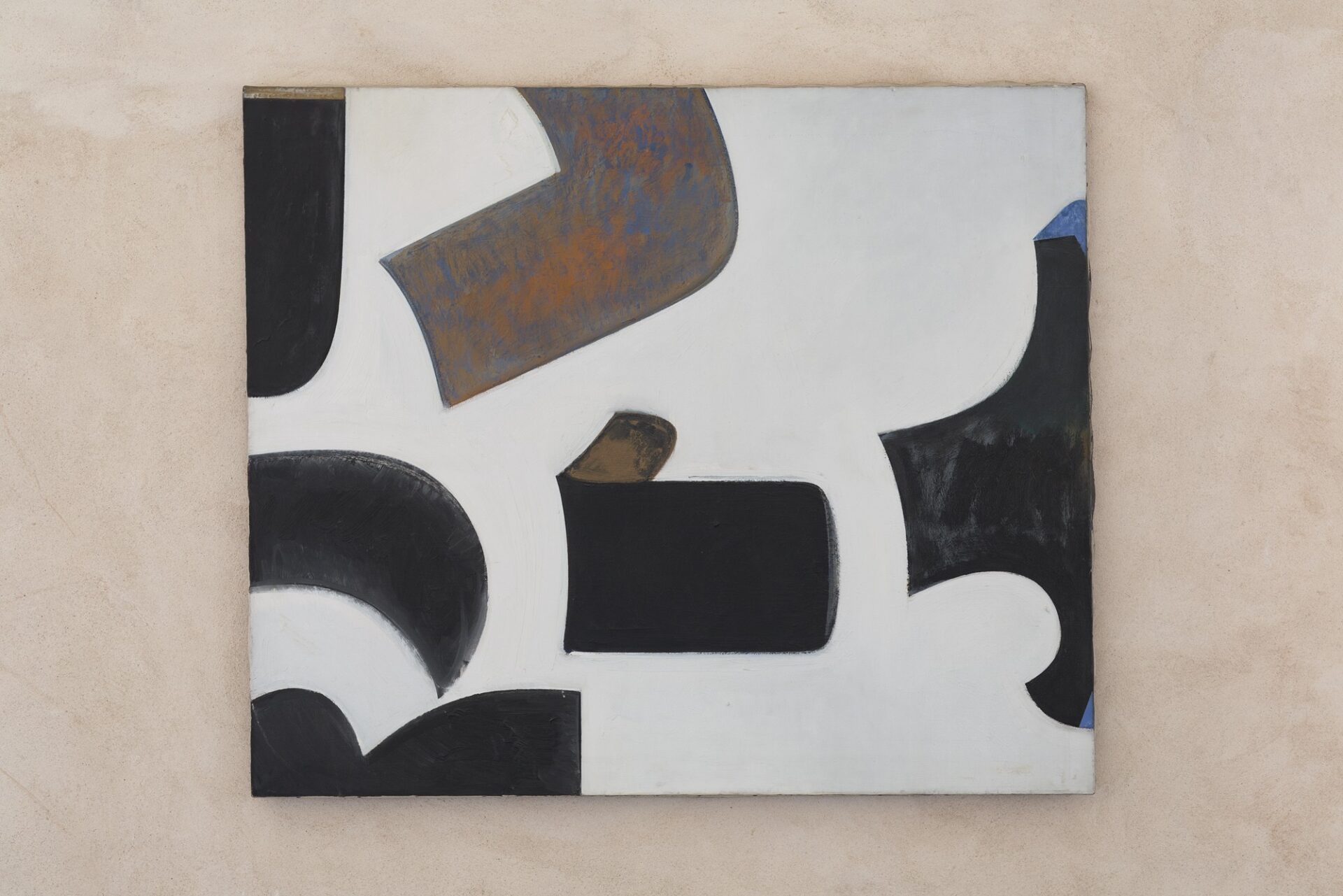The eleven paintings that Donald Judd installed at the Cobb House, including this one, all date from between 1956 and 1958. Judd exhibited paintings from the same period in two shows at the Panoras Gallery in New York, Don Judd and Nathan Raisen (September 4–15, 1956) and Don Judd (June 24–July 6, 1957).
In a note from 1963, Donald Judd described the unsuitability of the term “abstract art” to provide a definite meaning, writing:
It is not saying very much about a painting or sculpture to call it “abstract.” But the general things which are said are important; the most obvious is that the work is not representational. The term excludes the color and the structure, as well as the philosophy which both were designed to express, of some six hundred years of European painting. This negative definition of “abstract” is useful, although rudimentary, since it applies to all abstract art; it states what it is not. What abstraction is now seems so wide as to include anything. Even the broadest positive definitions are not comprehensive and they are very general. Specific definitions often apply to only parts of abstract art.1
In her essay in Judd’s 1975 catalogue raisonné, Roberta Smith wrote of the abstract forms in these paintings, “The irregular shapes themselves are difficult to describe and look as if Judd took great care to make them that way.”2 Although Judd stopped painting after 1962, painting informed the rest of his career as an artist: “My thought comes from painting even if I don’t paint.”3
